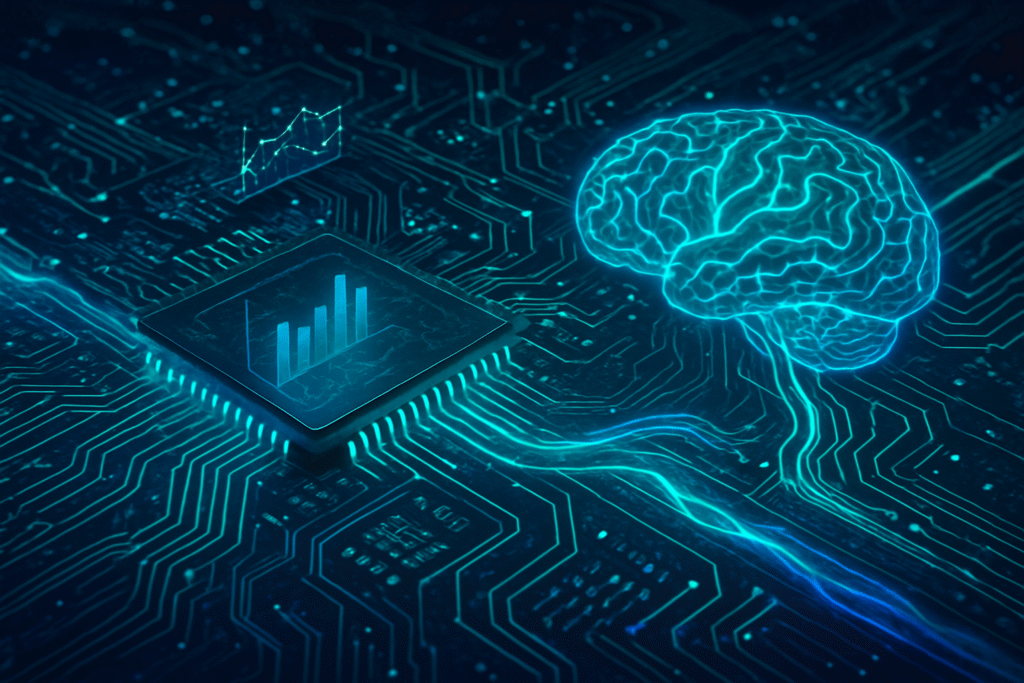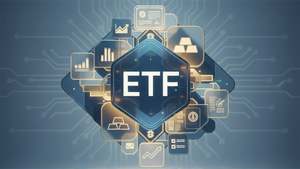
The global semiconductor industry is experiencing an unprecedented surge, positioning itself as a leading sector in current market trading. This remarkable growth is not merely a cyclical upturn but a fundamental shift driven by the relentless advancement and widespread adoption of Artificial Intelligence (AI) and Generative AI (Gen AI). Once heavily reliant on consumer electronics like smartphones and personal computers, the industry's new engine is the insatiable demand for specialized AI data center chips, marking a pivotal transformation in the digital economy.
This AI-fueled momentum is propelling semiconductor revenues to new stratospheric levels, with projections indicating a global market nearing $800 billion in 2025 and potentially exceeding $1 trillion by 2030. The implications extend far beyond chip manufacturers, touching every facet of the tech industry and signaling a profound reorientation of technological priorities towards computational power tailored for intelligent systems.
The Microscopic Engines of Intelligence: Decoding AI's Chip Demands
At the heart of this semiconductor renaissance lies a paradigm shift in computational requirements. Traditional CPUs, while versatile, are increasingly inadequate for the parallel processing demands of modern AI, particularly deep learning and large language models. This has led to an explosive demand for specialized AI chips, such as high-performance Graphics Processing Units (GPUs), Neural Processing Units (NPUs), and Application-Specific Integrated Circuits (ASICs) like Alphabet (NASDAQ: GOOGL) Google's TPUs. These accelerators are meticulously designed to handle the massive datasets and complex calculations inherent in AI and machine learning tasks with unparalleled efficiency.
The technical specifications of these chips are pushing the boundaries of silicon engineering. High Bandwidth Memory (HBM), for instance, has become a critical supporting technology, offering significantly faster data access compared to conventional DRAM, which is crucial for feeding the hungry AI processors. The memory segment alone is projected to surge by over 24% in 2025, driven by the increasing penetration of high-end products like HBM3 and HBM3e, with HBM4 on the horizon. Furthermore, networking semiconductors are experiencing a projected 13% growth as AI workloads shift the bottleneck from processing to data movement, necessitating advanced chips to overcome latency and throughput challenges within data centers. This specialized hardware differs significantly from previous approaches by integrating dedicated AI acceleration cores, optimized memory interfaces, and advanced packaging technologies to maximize performance per watt, a critical metric for power-intensive AI data centers.
Initial reactions from the AI research community and industry experts confirm the transformative nature of these developments. Nina Turner, Research Director for Semiconductors at IDC, notes the long-term revenue resilience driven by increased semiconductor content per system and enhanced compute capabilities. Experts from McKinsey & Company (NYSE: MCD) view the surge in generative AI as pushing the industry to innovate faster, approaching a "new S-curve" of technological advancement. The consensus is clear: the semiconductor industry is not just recovering; it's undergoing a fundamental restructuring to meet the demands of an AI-first world.
Corporate Colossus and Startup Scramble: Navigating the AI Chip Landscape
The AI-driven semiconductor boom is creating a fierce competitive landscape, significantly impacting tech giants, specialized AI labs, and nimble startups alike. Companies at the forefront of this wave are primarily those designing and manufacturing these advanced chips. NVIDIA Corporation (NASDAQ: NVDA) stands as a monumental beneficiary, dominating the AI accelerator market with its powerful GPUs. Its strategic advantage lies in its CUDA ecosystem, which has become the de facto standard for AI development, making its hardware indispensable for many AI researchers and developers. Other major players like Advanced Micro Devices, Inc. (NASDAQ: AMD) are aggressively expanding their AI chip portfolios, challenging NVIDIA's dominance with their own high-performance offerings.
Beyond the chip designers, foundries like Taiwan Semiconductor Manufacturing Company Limited (NYSE: TSM), or TSMC, are crucial, as they possess the advanced manufacturing capabilities required to produce these cutting-edge semiconductors. Their technological prowess and capacity are bottlenecks that dictate the pace of AI innovation. The competitive implications are profound: companies that can secure access to advanced fabrication will gain a significant strategic advantage, while those reliant on older technologies risk risking falling behind. This development also fosters a robust ecosystem for startups specializing in niche AI hardware, custom ASICs for specific AI tasks, or innovative cooling solutions for power-hungry AI data centers.
The market positioning of major cloud providers like Amazon.com, Inc. (NASDAQ: AMZN) with AWS, Microsoft Corporation (NASDAQ: MSFT) with Azure, and Alphabet with Google Cloud is also heavily influenced. These companies are not only massive consumers of AI chips for their cloud infrastructure but are also developing their own custom AI accelerators (e.g., Google's TPUs, Amazon's Inferentia and Trainium) to optimize performance and reduce reliance on external suppliers. This vertical integration strategy aims to disrupt existing products and services by offering highly optimized, cost-effective AI compute. The sheer scale of investment in AI-specific hardware by these tech giants underscores the belief that future competitive advantage will be inextricably linked to superior AI infrastructure.
A New Industrial Revolution: Broader Implications of the AI Chip Era
The current surge in the semiconductor industry, driven by AI, fits squarely into the broader narrative of a new industrial revolution. It's not merely an incremental technological improvement but a foundational shift akin to the advent of electricity or the internet. The pervasive impact of AI, from automating complex tasks to enabling entirely new forms of human-computer interaction, hinges critically on the availability of powerful and efficient processing units. This development underscores a significant trend in the AI landscape: the increasing hardware-software co-design, where advancements in algorithms and models are tightly coupled with innovations in chip architecture.
The impacts are far-reaching. Economically, it's fueling massive investment in R&D, manufacturing infrastructure, and specialized talent, creating new job markets and wealth. Socially, it promises to accelerate the deployment of AI across various sectors, from healthcare and finance to autonomous systems and personalized education, potentially leading to unprecedented productivity gains and new services. However, potential concerns also emerge, including the environmental footprint of energy-intensive AI data centers, the geopolitical implications of concentrated advanced chip manufacturing, and the ethical challenges posed by increasingly powerful AI systems. The US, for instance, has imposed export bans on certain advanced AI chips and manufacturing technologies to China, highlighting the strategic importance and national security implications of semiconductor leadership.
Comparing this to previous AI milestones, such as the rise of expert systems in the 1980s or the deep learning breakthrough of the 2010s, the current era is distinct due to the sheer scale of computational resources being deployed. While earlier breakthroughs demonstrated AI's potential, the current phase is about operationalizing that potential at a global scale, making AI a ubiquitous utility. The investment in silicon infrastructure reflects a collective bet on AI as the next fundamental layer of technological progress, a bet that dwarfs previous commitments in its ambition and scope.
The Horizon of Innovation: Future Developments in AI Silicon
Looking ahead, the trajectory of AI-driven semiconductor innovation promises even more transformative developments. In the near term, experts predict continued advancements in chip architecture, focusing on greater energy efficiency and specialized designs for various AI tasks, from training large models to performing inference at the edge. We can expect to see further integration of AI accelerators directly into general-purpose CPUs and System-on-Chips (SoCs), making AI capabilities more ubiquitous in everyday devices. The ongoing evolution of HBM and other advanced memory technologies will be crucial, as memory bandwidth often becomes the bottleneck for increasingly complex AI models.
Potential applications and use cases on the horizon are vast. Beyond current applications in cloud computing and autonomous vehicles, future developments could enable truly personalized AI assistants running locally on devices, advanced robotics with real-time decision-making capabilities, and breakthroughs in scientific discovery through accelerated simulations and data analysis. The concept of "Edge AI" will become even more prominent, with specialized, low-power chips enabling sophisticated AI processing directly on sensors, industrial equipment, and smart appliances, reducing latency and enhancing privacy.
However, significant challenges need to be addressed. The escalating cost of designing and manufacturing cutting-edge chips, the immense power consumption of AI data centers, and the complexities of advanced packaging technologies are formidable hurdles. Geopolitical tensions surrounding semiconductor supply chains also pose a continuous challenge to global collaboration and innovation. Experts predict a future where materials science, quantum computing, and neuromorphic computing will converge with traditional silicon, pushing the boundaries of what's possible. The race for materials beyond silicon, such as carbon nanotubes or 2D materials, could unlock new paradigms for AI hardware.
A Defining Moment: The Enduring Legacy of AI's Silicon Demand
In summation, the semiconductor industry's emergence as a leading market sector is unequivocally driven by the surging demand for Artificial Intelligence. The shift from traditional consumer electronics to specialized AI data center chips marks a profound recalibration of the industry's core drivers. This era is characterized by relentless innovation in chip architecture, memory technologies, and networking solutions, all meticulously engineered to power the burgeoning world of AI and generative AI.
This development holds immense significance in AI history, representing the crucial hardware foundation upon which the next generation of intelligent software will be built. It signifies that AI has moved beyond theoretical research into an era of massive practical deployment, demanding a commensurate leap in computational infrastructure. The long-term impact will be a world increasingly shaped by ubiquitous AI, where intelligent systems are seamlessly integrated into every aspect of daily life and industry, from smart cities to personalized medicine.
As we move forward, the key takeaways are clear: AI is the primary catalyst, specialized hardware is essential, and the competitive landscape is intensely dynamic. What to watch for in the coming weeks and months includes further announcements from major chip manufacturers regarding next-generation AI accelerators, strategic partnerships between AI developers and foundries, and the ongoing geopolitical maneuvering around semiconductor supply chains. The silicon age, far from waning, is entering its most intelligent and impactful chapter yet, with AI as its guiding force.
This content is intended for informational purposes only and represents analysis of current AI developments.
TokenRing AI delivers enterprise-grade solutions for multi-agent AI workflow orchestration, AI-powered development tools, and seamless remote collaboration platforms.
For more information, visit https://www.tokenring.ai/.




